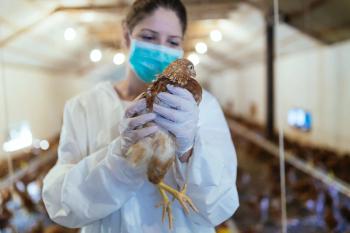
WHO Recommendations for Monitoring COVID-19 and the Flu
The World Health Organization released a brief addressing medical concerns as the influenza season begins in the northern hemisphere during the COVID-19 pandemic.
The World Health Organization released a policy brief to address concerns that policymakers may face as the influenza season gets underway in the midst of the novel coronavirus (COVID-19) pandemic.
In their paper,
The
Are you a clinician or interested stakeholder in this medical topic? Contagion® has developed its ebook, COVID-19 and the Flu: What Clinicians Need to Know, which provides insights from medical experts and offers potential strategies in dealing with the confluence of the influenza season and the existing pandemic. You can download it
JAMA Insights
“Annual vaccination remains the best tool for preventing influenza, and vaccine availability is projected at record levels,” the authors wrote. “Initiation of antiviral treatment as soon as possible is recommended for persons with suspected or confirmed influenza who are hospitalized, have progressive disease, or are at high risk for complications.”
The Center for Infectious Disease Research and Policy (CIDRAP) cautioned being lulled into a false sense of security by the promise of a mild flu season is not a wise decision. Because of low case numbers from the Southern Hemisphere – down as much as 99% in Australia compared to past years – some expect that the Northern Hemisphere’s flu season will also be mild. With the novel coronavirus (COVID-19) pandemic raging, though, “it would be a foolhardy not to prepare for high caseloads this winter,”
Too much is still unknown about how COVID-19 and the flu may interact and/or co-circulate, CIDRAP experts continued, to know exactly the type of possible “twindemic” the US. flu season may produce.
Other parts of the world are preparing for the possible twindemic as well. For example, health officials in South Korea developed a test that can detect both COVID-19 and the flu from the same sample. It was developed from a version of the PCR test that uses nose or throat samples,
Due to the similar presentation of symptoms for both illnesses, a senior health ministry official from South Korea told the AP that having a diagnosis for both diseases based on the same sample within 3-6 hours “would be convenient for patients and also reduce the burden of medical workers.”
In the Charleston, South Carolina area, researchers developed the COVflu-19 test, which can detect COVID-19, influenza A, and influenza B from 1 sample, Make Medical Executive Director of West Virginia Ryan Nibert
The AP debunked a question about the flu vaccine increasing a person’s chances of contracting COVID-19.
The suggestion that the flu vaccine might decrease the severity of COVID-19 prompted researchers from the University of Florida to conduct a retrospective study of 2,500 patients who tested positive for COVID-19. They examined comorbidities and influenza vaccination status in order to determine the severity of disease based on hospitalization and ICU admission. They determined that COVID-19 patients who did not receive the flu vaccine within the previous 12 months had 2.44 greater odds of hospitalization and 3.29 greater odds of ICU admission when compared to COVID-19 patients who had received the flu vaccine.
“Our analysis suggests that the influenza vaccination is potentially protective from moderate and severe cases of COVID-19 infection. This protective effect holds regardless of comorbidity,” the study authors said. Their findings are
A
“Due to the lack of effective medication or vaccine for COVID‐19, timely detection of this viral infection and distinguishing from influenza are very important,” the study authors wrote.
In other news about the flu:
- A study published in The Lancet Infectious Disease concluded that the flu vaccine can be underused among women who are pregnant, as reported by
sister publication, HCP Live . However, the study authors said, it can protect the mother and the infant from the flu. The AP reported that an equine flu is killing wild burros (a type of wild donkey) in Southern California, though they said equine flu is specific to horses, mules, and donkeys.- Mexico detected its first case of a patient with COVID-19 and influenza A,
according to media reports . The patient – a 54-year-old female who suffers from autoimmune disease, chronic lung disease, obesity, and previously had cancer – hospitalized at the end of September but there was no word on her condition.
Newsletter
Stay ahead of emerging infectious disease threats with expert insights and breaking research. Subscribe now to get updates delivered straight to your inbox.

























































































































































































































































































